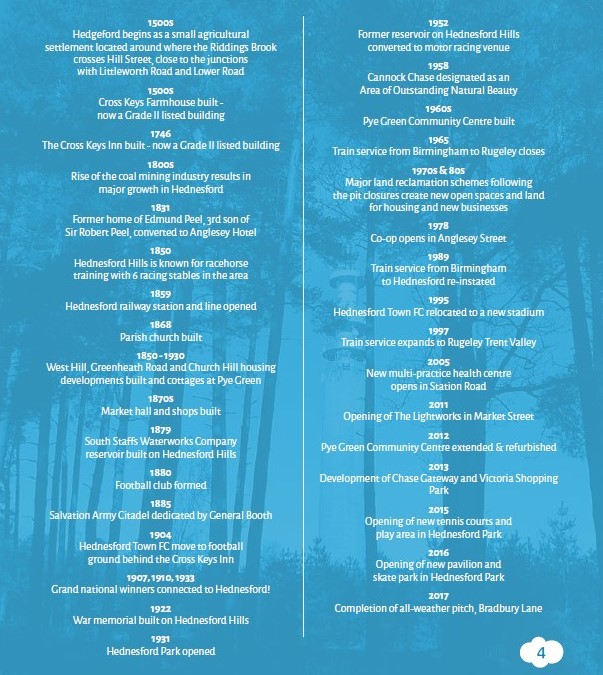Hednesford is a market town and the Gateway to Cannock Chase Staffordshire, England and has a rich and vibrant coal mining history
Heritage
The first recorded mention of Hednesford dates back to 1153, when King Stephen granted an exemption of pannage dues to the small hamlet of Hedenedford.
The town can be found on William Yates’ 1775 map of Staffordshire (pictured), showing it as a small village with 13 buildings.
Hednesford developed as a coal mining town in the second half of the 19th century, with the opening of the Uxbridge Pit.
The Valley Pit (first called the Pool Pit) in Hednesford town centre opened in the 1870s. To prevent this pit from flooding, the Cannock & Rugeley Colliery Company diverted the brook that fed Hednesford Pool (pictured on the 1775 map). This led to the pool drying up by 1900. In 1931, the site was reopened as Hednesford Park.
Between 1914 and 1918 two army training camps were built in the area,[9] and over half a million British and Commonwealth troops passed through destined for the Western Front of World War I.
In 1939, the Royal Air Force opened the No. 6 School of Technical Training, later known as RAF Hednesford. It was used to train technicians in the maintenance and repair of airframes and engines for World War II. The camp ceased operations in 1956, and was repurposed for the resettlement of refugees fleeing from the Hungarian Revolution of the same year.[11] The site is now a part of the Cannock Chase Area of Outstanding Natural Beauty (AONB).
Economically, Hednesford has experienced widespread changes since the 1980s due to the decline of mining and manufacturing jobs in the region. However, Cannock Chase district has seen prolonged job growth in recent years together with significant new housing developments on the land west of Pye Green.
